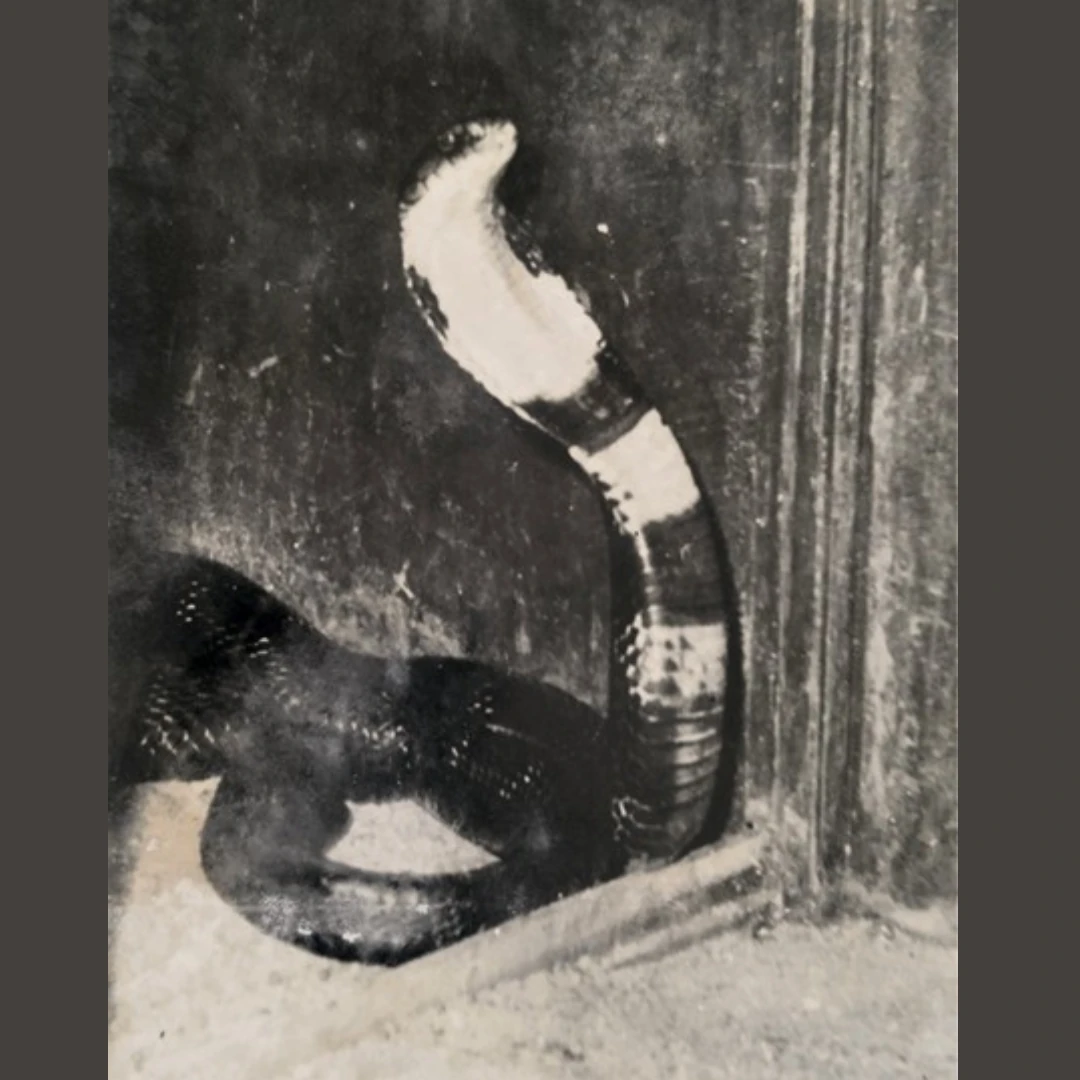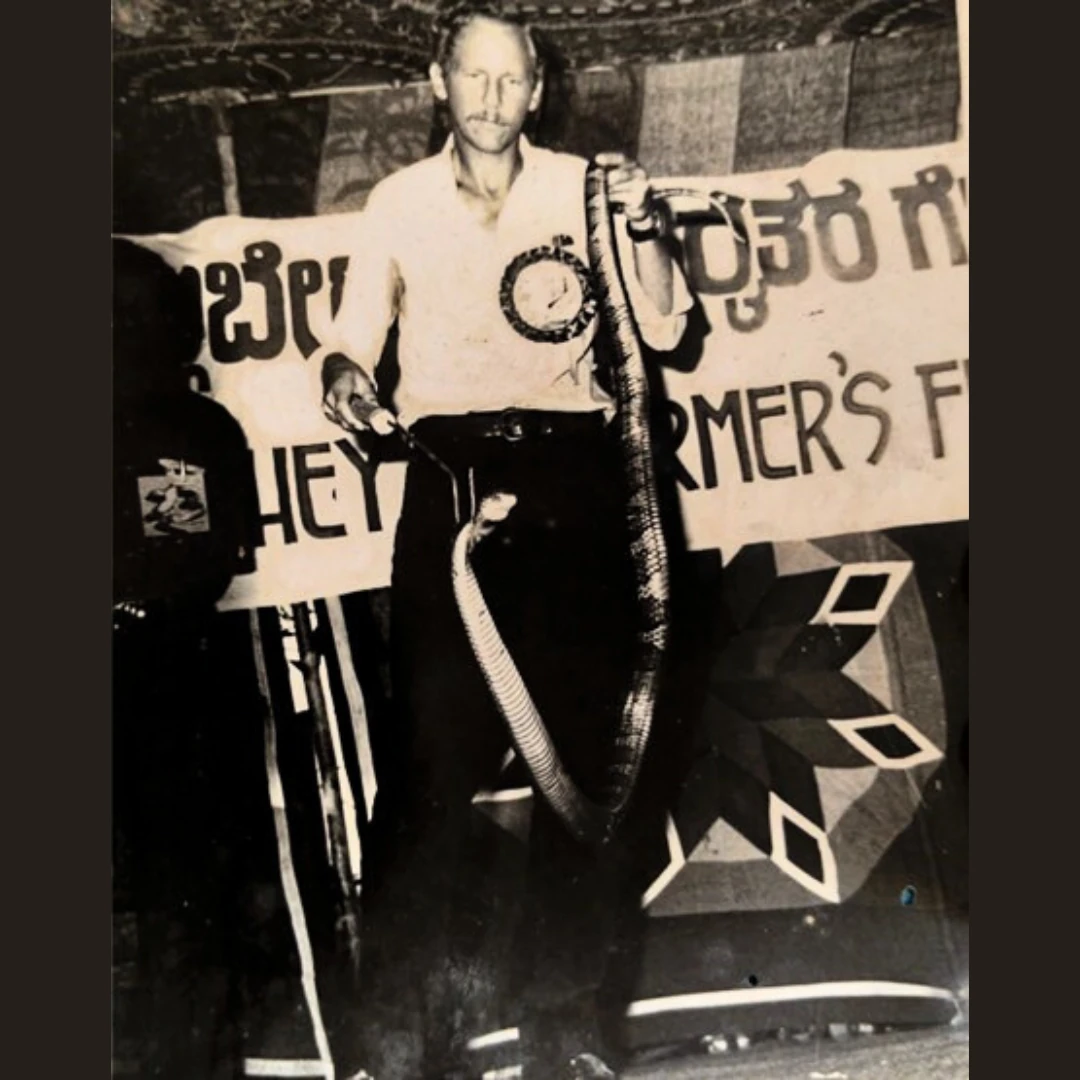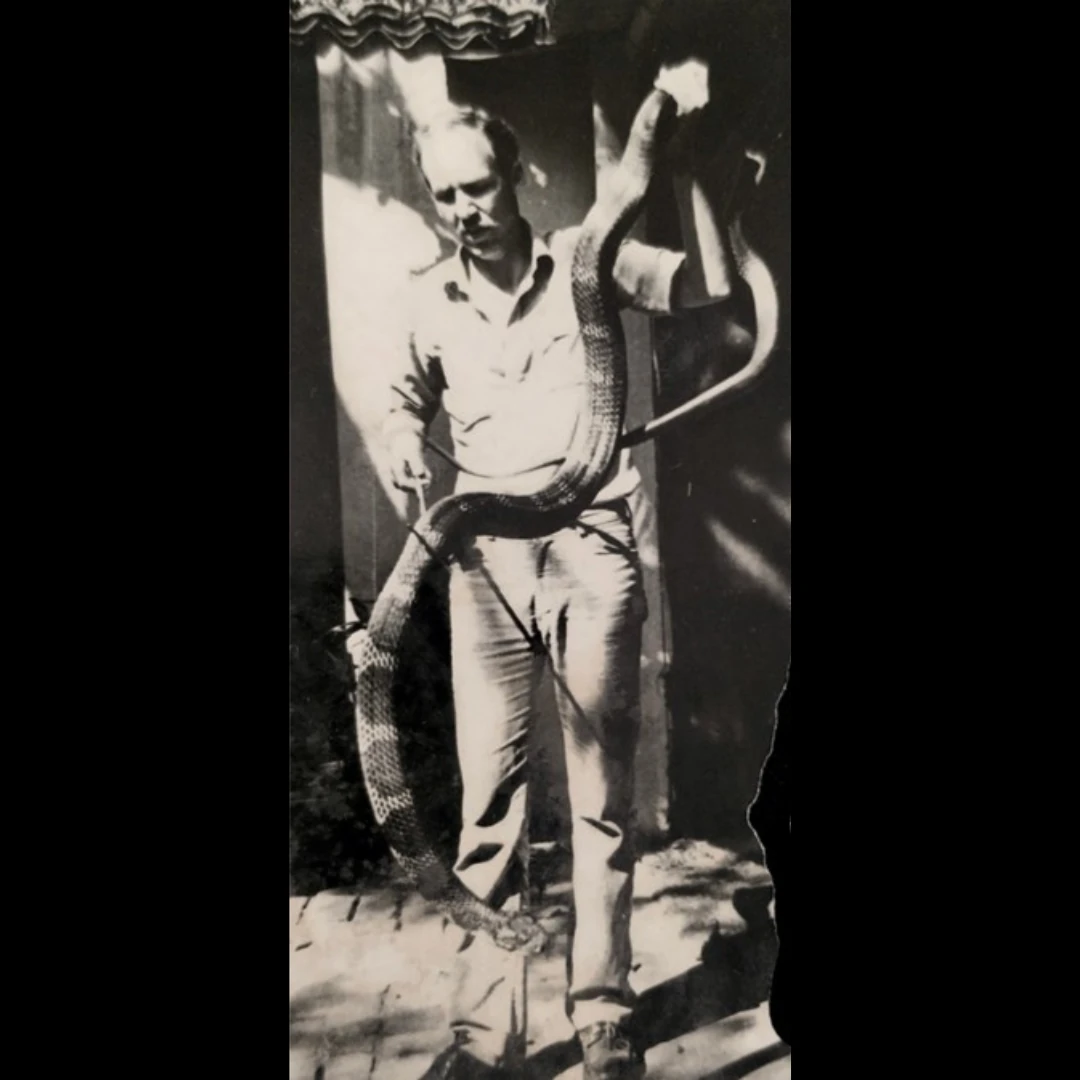Teachers, whether it is at a school or a college, come across some students who stand out from among many, some others being kept out too for not very commendable reasons. These students are special because they carry with them certain qualities, interests or skills that make a teacher notice them. Sometimes it can happen that these specialities combine with those of the teachers themselves and both together achieve results which may not be in the curriculum or other associated activities, may not even be noticed by others. However, certain qualities in them create certain meaningful friendships that result in certain remarkable achievements too.
Sharath, Charles and Surya were three students who pursued their studies in Biology. They were not easily satisfied with their studies, and therefore, they looked into the world of animals around them. They narrowed down their interests to identify snakes which fascinated them, fascinated is the right word, and they were very successful in establishing an organisation for the pursuit of their learning. Through their efforts, they started a small storage place for keeping their snakes which they used to collect from different houses whenever people called them after they came to be known as snake trappers in Mangalore. They knew more about snakes, just as they knew about the reptile family, and their collections, which they released in to the forests from time to time. Those encounters with snakes gave them enough opportunities to learn more about them. They did find help from others including the Department of Forest of the state which also sought their help from time to time, in one way or other, connected with animals.
Several snake exhibitions were conducted not only in Mangalore but also in places like Udupi, Kundapur, Puttur in addition to smaller ones in the Nehru Maidan exhibitions. Their organisation made boxes for rearing snakes with necessary compartments for each box so that they could be cleaned without catching out the snakes. When the boxes were full with different varieties of snakes in different boxes, they would go on a hiking, with the snakes in gunny or cloth bags, deep into the forest and release them. There were occasions when they had to do the same with other animals which were brought to them by people of Mangalore or when they were called to trap them and take away.
One such occasion was when a king cobra was sighted in an estate in Guthigar village of Sullia taluk of Dakshina Kannada. They did not have much to do with the trapping of the king cobra which was thirteen feet in length, and a formidable one when it stood up to the height of three to four feet with its hood spread.

King Cobra in a box at the Exhibition (File Photo)
All snakes can use their length as a base and stand up to a certain amount of that length to defend themselves when they see possible enemies. This king cobra was sighted by the manager of the estate when it was coiled and seemed to have been sleeping. Once he recognised that it was a king cobra, he bolted from the place as fast as possible because he found it very big. He reported that it looked like a car tyre in snake’s coil, and called one of these students who in turn contacted one Mr Manmath Kumar of Puttur, a well-known snake trapper, who could reach Guthigar early from his place. It was not only that catching a king cobra was very difficult both from the fact that they are longer and heavier but the poison also has no antidote in normal hospitals. As they had no experience of catching a king cobra, the young men reached out Mr Manmath Kumar. It must be recalled that a king cobra can pump in about twenty-five grams of poison in a single bite and it is enough to kill a person or other smaller animals in a few minutes time.
The king cobra was seated coiled by the side of a wide stream and Mr Manmath Kumar knew that the snake, once disturbed, may get into the water and move over to a forest area which was on the opposite side of the estate and the stream. He anticipated its movements and reached the opposite side of the stream and waited there. There was a minor stream joining this bigger stream from the opposite side and the banks on both sides of this small stream was up to four to five feet in height. So he waited in one of the sides, if needed, he could jump over to the other side easily, because the stream was very small. He expected the snake to swim across and reach the landed area through this minor stream. As he was standing almost hidden, there was no chance for the cobra to notice him and become wary of entering this small stream.
The cobra got out from the estate side, got down into the flowing water, swam across in its usual zig zag style, and reached the flowing out end of the small stream from the forest area, above which Mr Manmath Kumar was waiting with a long fork in his hand which could reach out to the cobra when it would get into the small stream. Indeed, it did the same as expected and Mr Manmath Kumar used the fork a little behind its head as all snake trappers do and the other people who had reached there by that time helped him get down into the stream and catch the snake, a difficult task indeed, and put it in a gunny bag. It was transported to Mangalore in the boot of a car and handed over to the three young men to be kept in one of the boxes at their snake shed.
For them, it was a difficult task to look after it in one of the boxes in the shed. They had made several boxes for the snake exhibitions and also kept the snakes while they were in transit from the trapped place to the forest. However, even the biggest box of six feet length and three feet height was too small a place for the thirteen feet long king cobra, which needed a bigger place that could not be made available immediately. The Department of Forest was informed as that was the procedure and the former directed that the reptile be kept till arrangements were made to transport it to the Mysore zoo, a task which was not easy to execute.
Rearing a king cobra is one of the most difficult things in animal keeping. It needs a very cool habitat because it lives in deep forests where cool grass-lands with water is available nearby. So, the keepers kept a fan on top of the box which had aeration facility with some net frames on top which also served as a door for sending in or taking out the snakes. As far as the king cobra was concerned, it could not be sent in by catching from the gunny bag. Indeed, that thirteen feet long king cobra needed at least three people to handle it from head to tail just for keeping the weight in a line. Therefore, with great amount of struggle they sent the bag itself inside and opened the tied-end and waited for some time for the snake to come out. It did not take much time for the snake to come out. As usual to any snake, it moved inside, usual to all animals when they are caged, and tried to put its nose against all corners of the box and after about an hour, settled down into its coil when the young men opened a little of the top door and removed the gunny bag by using a small hook.

Mr Romulus Whitaker Exhibiting the King Cobra at the Inauguration of Kadri Snake Park (File Photo)

As usual to them, these three students were not ordinary snake trappers at times of need. They also decided to make as much studies as possible. They contacted Mr Romulus Whitaker of the famous Madras Snake Park who was very much interested in a king cobra from the Western Ghats. In fact, it was Mr Romulus Whitaker who inaugurated the Kadri Snake Park later. He desired to see it and examine it for further studies. He had a couple of king cobras in his snake park, but they were from the Andamans which are very different from the Indian king cobras. However, he could not come to Mangalore at least for a couple of months as he was on a tour associated with the World Wildlife Fund which he could not avoid. He also expressed his desire that it would be worthwhile to make this king cobra mate with one of the andamans king cobras. However, the arrangements were going to be difficult as he was going to be away from Madras then.
Shararth, Charles and Surya were at their wits end. On one side there was the Department of Forests who promised all help to take the cobra to Mysore and no one was willing to accompany such a dangerous animal. So, the trip got postponed again and again. On the other side, a possible visit of Mr Romulous Whitekar also got postponed. It was then that an idea struck them and their patrons. They wanted to exhibit the king cobra at the Kadri Hills where there was a deer park started because of the exceptional leadership of Mr N. Sampangi who was then the DFO. He was replaced by an equally efficient Mr Sadashivaiah who encouraged the young men.
The exhibition was organised in the garden side of the Kadri Hills beyond the then deer park. The team got encouraged by Mr Blacious D’souza who was then the Chairman of the Municipal Council of Mangalore. A temporary shamiyana was erected under which the box with the king cobra and a good amount of reading matter around and above the box were also exhibited. Hundreds of people visited after plenty of publicity was available through local newspapers.
The snake was looked after for the next couple of months till Mr Romulous Whitekar returned to the Madras Snake Park. A special box of a smaller size was made and the king cobra was taken in it to Chennai to the Madras Snake Park. It mated with the andaman king cobra and nine eggs were laid by the female. All eggs hatched on time. Whitekar was willing to give two of the young ones to Mangalore. All the same, considering the difficulties in rearing and feeding them, it was gently declined. King cobras eat only other snakes. In fact, it was a herculean task to catch rat snakes to feed the huge king cobra when it was kept in a box. Also, when the king cobra catches the rat snake to swallow, the rat snake struggles and there was always a possibility that the glass front of the box could break. So, a new box was made for it with one inch mesh covering the glass in front.
The king cobra was looked after more than six months in two boxes which had a wide connecting passage for it to move from one to another, with a closing shutter to separate the two boxes. The king cobra was fed with a rat snake when it was in one of the boxes. The cobra needed to be fed only once in two weeks as snakes do not feed every day. Once they feed, they hibernate for a couple of weeks to feed again. The difficulties were when it stretched itself from one end of the box to the other end and releasing the rat snake was difficult because it would run from one end to the other and there would be a struggle between both, one to feed and the other to escape death, a pitiable sight to watch even though the dying one is usually looked upon with fear as a snake.
When the snake park was started at Kadri, which was shifted to Pilikula later, the king cobra was given its king’s place by making a large box at the end of the line of boxes where snakes were kept for people to watch them. The box was fitted with a fan on top with an iron net underneath the fan and an exhaust fan in one corner, with net coverage again, to keep its place as cool as possible. Though people wanted to see its majesty, no one disturbed the snakes and all shouts and shrieks of people did not reach any snake because they cannot hear, they understand all possible messages through the vibrations on the floor or materials connected.
Sharath, Charles and Surya, are in their sixties now. Sharath moved over to the United States for employment. Charles now is the President of the Animal Care Society of Mangalore. Surya completed his doctorate after his M.Sc. in Biology and is a consultant for governments of the state and the country and is associated with several environmental projects as a researcher.
They stand as examples of young students in their youth who express themselves beyond the syllabi that are prescribed for them for their studies. That indeed is the crowning glory of all young women and men except the fact that many of them may not find the opportunities for pursuing them.
………………………………….
Prof. Sunney Tharappan, is Director of College for Leadership and HRD, Mangaluru. He trains and writes and lives in Mangaluru.
Cover Photo by Avinash Uppuluri on Unsplash
Other Photos: Author’s Collection
